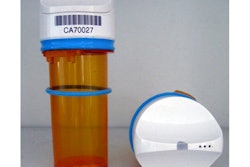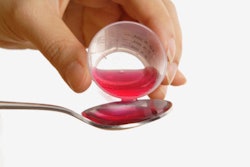
Healthcare Packaging (HCP): A year ago, you reported that the U.K. was ahead of the U.S. in Rx-to-OTC (prescription to over-the-counter) switches. Can you update us on where the market stands today?
Dr. John Blenkinsopp (JB): Switches from Rx-to-OTC here in the U.K. is alive and well. There are a number of developments. Recently, the local trade body for OTC medicines over here, The Proprietary Assn. of Great Britain, released information about a survey they did asking about switches. In particular, it was looking from the point of view of what our family doctors/general practitioners and physicians think about switches. There have been a number of innovative switches, one of which currently being advertised on TV over here is Flomax, for men with benign prostatic hyperplasia who have to pass urine more often. One of the innovative or interesting things about it is that this was a switch that requires the pharmacist to advise the patient to get regular checks with his doctor.
HCP: Are those the privacy booths that the pharmacies are installing so that when there are instructions or greater details about the package or the use of the product that demanded privacy?
JB: Privacy booths were an issue, particularly regarding sensitive consultations such as emergency hormonal contraception. Patients want privacy to have a discussion. I think now the vast majority of pharmacies here in the U.K. will have a booth where both the pharmacist and the patient can sit down and have a private conversation about their medicines.
HCP: That's a big change here from the United States where we have these discussions right over a counter, with people in line in front and in back of us.
JB: That was exactly the situation in the U.K. up until maybe five to 10 years ago. I think that might be one of the changes that you might see coming in the States because I do get the feeling that there might be more interest in what you want your pharmacist to do in the future.
Take the Flomax patient, for example. The pharmacist stays in control of the sale of the product. But, that really says to the patient, 'If you found some benefit with this medicine then I can continue to sell it to you. But you should just get your prostate health checked from your family doctor. Then, once you have that done, I will continue to sell it to you for a year until your regular prostate check. So, the pharmacist truly develops a shared care relationship between both the doctor and patient.
HCP: So the patient has to show some compliance and go in for the check-up and hand the results back to the pharmacist in order for this over-the-counter relationship to continue?
JB: The patient has to affirm that the physician is happy for the sales to continue, so it is the start of a real shared care model. You can think about other diseases where it might be beneficial for the patient to have easier access to medicines from a community pharmacy, but an overseeing role, perhaps by the family doctor. Areas that immediately spring to mind could include treatment of high blood pressure and asthma. Certainly, I think, there could be a very strong case made for both of those areas for medicines to be more easily accessible from the patient's point of view, such as for a patient regularly needing an asthma inhaler. They currently have to get those on prescription when they run out. Wouldn't it be easier if they were able to buy one before an emergency situation? Then the pharmacist can recommend an inhaler and become more actively involved in care management.
In the U.K., physicians with growing workloads are starting to hand over responsibilities
for some minor ailments to their nursing staff or to pharmacists.
HCP: We are seeing convenience stores and places like Walgreens and CVS where there are afternoon clinic hours and it really is a prescribing nurse more than a physician at these facilities.
JB: Currently, about a third of doctors surveyed recently indicated they would be happy for pharmacists to be able to show drugs for a product such as Viagra for male erectile dysfunction. Antibiotic treatments for a urinary tract infection would be another area to explore.
HCP: The OTC pack that goes home with the patient plays a large role in communicating directions, offering compliance features, and even packs shelf impact since it's going to be competing with other over-the-counter medicines. So designers finally have a chance to offer some innovation. Here in the United States, package designers call the pharmaceutical community the final frontier because it is hard to be innovative or make changes because of regulatory and validation issues. Is there a design community in the U.K. that is drifting into this arena of turning what you used to get from the pharmacist in a pill bottle into a different package design?
JB: Yes, I think there are some good signs. Here in the U.K., and in rest of Europe, there are now additional guidelines and requirements on the patient information leaflet, or the package insert. It must be readable and be understood by an average person. There is also quite a lot of work looking at the outer box as well. And, there are some innovative approaches. What's particularly interesting to me is that it's not necessarily pharma driving this, but medical devices. They seem to be a little more advanced in this because they are starting to realize that there are a lot more things that patients are willing to do in their homes with regard to self-testing.
HCP: Are you referring to diagnostic kits and things like that?
JB: I think diagnostics have been dragging pharma along a little bit. But I do see change. One thing that I do spot in the U.K. is a category of medicines that we call “behind-the-counter.” What has been happening in some pharmacies, certainly in some of the larger chain store-type pharmacies, is that there are self-select demo packs being placed on shelf so that consumers can actually pick up the box and read the information on the outer packaging to decide if the product is right for them. And then, they take the demo box to the counter where it is switched for a box that actually contains the medicines. That is a fascinating role for a package to serve as a precursor to the consumer before buying the actual product.
HCP: So the potential patient or the consumer actually can hold and read a pack on the shelf that doesn't have the product inside it, much like we might take a movie DVD to the counter. As we wrap up here, is there any other angle you wish to address? Obviously, legislation in the U.K. is pushing this along. Economically, it seems to benefit everybody in that more consumers get exposed to different methods of taking care of their problems for which they have to enter the health system. Are the switches there for the local community, or are you also having to deal with multilingual packages going to other countries in Europe or around the world?
JB: What I tend to find in Europe is that each country deals with its pack separately. So I haven't seen many situations, particularly with medicines, where there are multilingual packs.
HCP: So each individual country is going to be the judge of whether that can go over-the-counter or whether a switch from Rx-to-OTC works in that country?
JB: So far, that's what I've seen. I believe there will be much more harmonization across Europe in the future because a number of the more recent switches. Alli, for example, is a weight-loss product. Alli had a medical license over here in Europe that meant that when it switched in one country, it switched in all of them. So from that point of view, one of the regulatory challenges in the future is the way that the licenses will be granted. Does it mean that if a product makes a switch in one country, would there have to be agreements to switch in all countries? It's a growing area to watch.






















